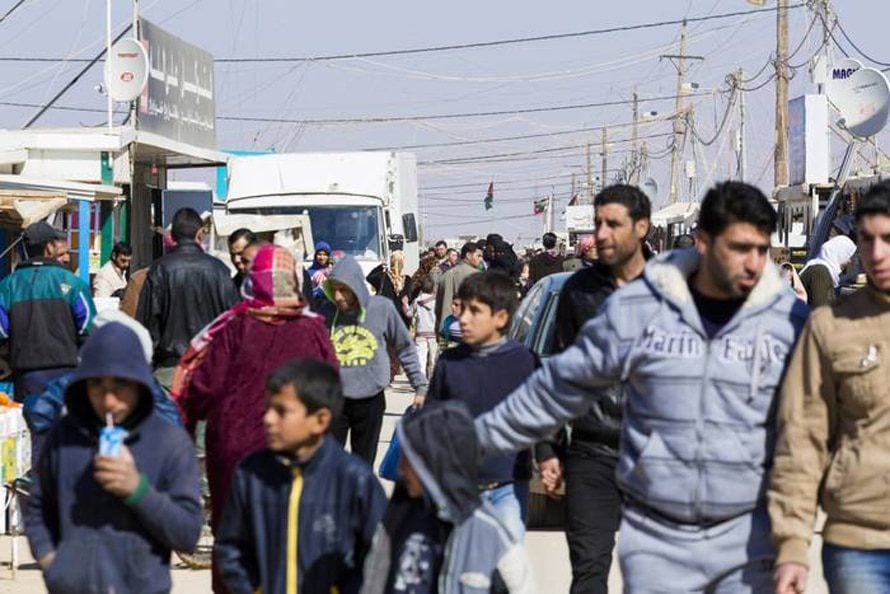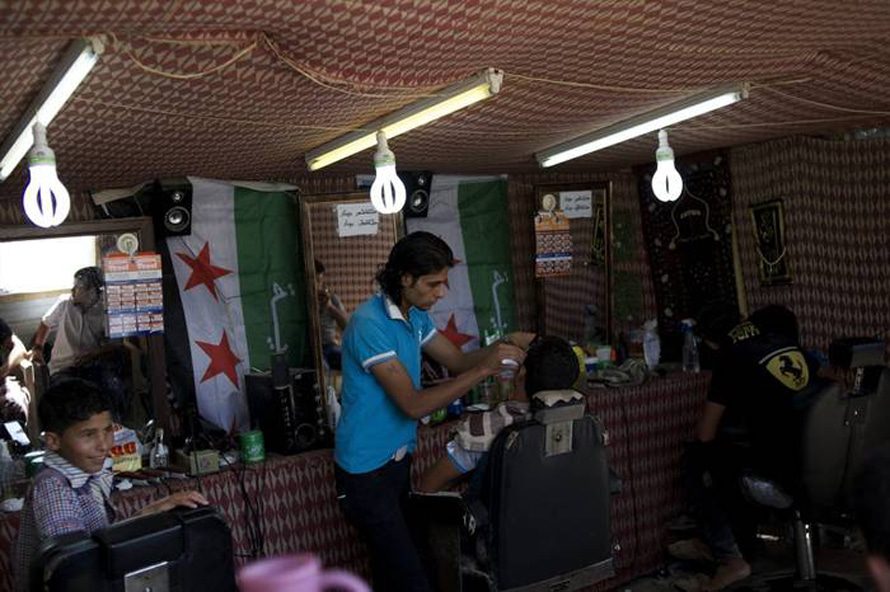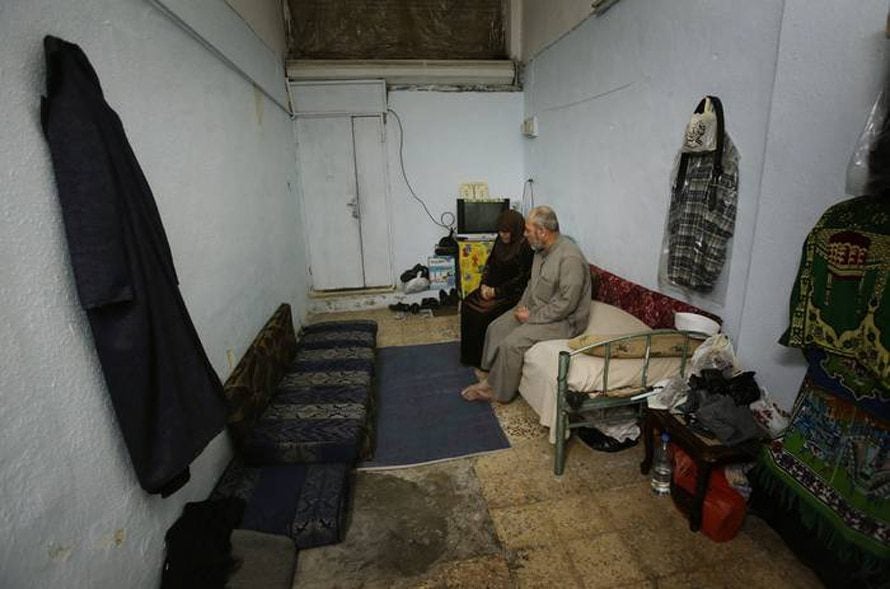
The Jordanian prime minister’s office estimates that more than 1.3 million Syrian refugees now live in Jordan. However, UNHCR presents a different figure: more than 590,000 have registered with the refugee organisation, as of June 2014. Of this number, 104,869 live in camps and 494,050 live outside camps in urban areas (UNHCR, May 2014). The largest camp is the Zaatari Refugee Camp (around 85,000 refugees as of June 2014), in Mafraq Governorate, near the Syrian border. Meeting the basic living needs of Jordan’s citizens and the new population has become increasingly difficult for a country already poor in resources.
An official UN study estimates the cost of hosting Syrian refugees in Jordan in 2013 and 2014 at 5.3 billion USD, noting that the government and the UN had estimated that the cost of hosting refugees in 2014 would amount to only 2.1 billion USD, of which Jordan has only received 777 million USD, that is, about 39 percent of the total cost in 2013.
Energy
The greatest difficulty Jordan has faced since 2009 is with the supply of energy, and the situation has worsened in the last two years, with the constant influx of Syrian refugees who have spread throughout Jordan, to the point that their numbers exceeded the numbers of native citizens in some places, not to mention the refugee camps that have been established on the outskirts of some cities. Syrian refugees now constitute nearly ten percent of the population of Jordan.
According to the Jordanian Ministry of Energy and Mineral Resources, the cost of imported energy amounted to approximately 4.08 billion JOD (about 17 percent of GDP), at a time when the ministry estimates that the demand for oil and gas is going to increase by 5.5 percent by 2020, that is, about 12.5 million metric tons in oil equivalent, an increase of 50 percent over last year.
Demand for electricity is expected to increase by 6.4 percent by 2020, to 28 gigawatts, an increase of 75 percent from last year.
Jordan imports more than 97 percent of its energy from international markets at international prices, with the exception of a limited discount it receives from Iraq for a mere ten percent of its daily needs of crude oil imported using containers that deliver the oil to the only refinery in Jordan, in Zarqa Governorate, where it is mixed with other types of oil before being refined.
The need for fuel increased after Egyptian gas was cut off, following the revolution of 25 January 2011; this prompted power plants to return to the use of heavy fuel and diesel to generate electricity, which was becoming increasingly necessary as a result of the high population growth caused by the Syrians seeking asylum in Jordan. This raised the electric loads in Jordan to record levels that reached 2800 megawatts, compared with the normal load, which did not exceed 2500 MW before the country’s population boom.
This population boom due to the increasing numbers of Syrian refugees has led to large demographic changes in Jordan, which have put great pressure on the infrastructure and exhausted local resources, in the difficult financial circumstances faced by the kingdom.

Unemployment
The effect of the population growth, especially among the young, caused by the increased refugee flow has also affected the labor market. The rate of unemployment increased among Jordanians, as employers preferred to hire Syrians who worked for low wages and in some cases, produced better craftsmanship than the Jordanians.
This effect has spread to restaurants, shops, and crafts, depriving many citizens of employment in these sectors, especially in areas where Syrians are concentrated. The UN has described the refugees in a report issued at the end of 2013 as “more daring and shrewd. They will integrate themselves in the Jordanian economy due to their difficult living conditions.”
The International Labour Organization (ILO) has recently estimated that Syrians constitute 48.5 percent of the total work force in the Jordanian governorates that are hosting most of the Syrian refugees, while Jordanians make up only 36.5 percent.
Recent estimates of unemployment by the Jordanian Department of Statistics reveal an increase of 11.8 percent in the first quarter of the current year (a growth rate of 0.8 percent) over the fourth quarter of 2013.
Education
Education has also been affected directly by the flow of Syrian refugees into Jordanian cities and villages. According to the Jordanian Ministry of Education, the number of Syrian students reached 111,589 by the end of 2013, compared with 44,022 in 2012 and 7,337 in 2011, whereas Jordanian students numbered 1.7 million, in 6,355 schools.
According to Minister Mohammad Thneibat, the government spends a minimum of 450 million JOD annually on the education of Syrian students, and the international aid received by Jordan for the Syrians does not exceed 30 percent of the amount spent by the government.
The increase in the number of students has led to the need in Jordan for 100 new schools, with 1000 students per school; however, there are currently only about 78 schools dedicated to Syrian students. So far, there is no official figure for the number of Syrian students who are unable to attend school.

Health
Jordanian health services have also been under a great deal of pressure, as those services are provided, in hospitals and health centers across the kingdom, to all Syrian refugees who enter its territories.
The Ministry of Health has deployed its personnel in camps and other areas where Syrians are concentrated, so that it may deal on a first hand basis with the diseases appearing among the refugees, by taking all the necessary measures for the prevention of communicable diseases.
Recent statements by the Jordanian Directorate of Infectious Disease Control of the Ministry of Health have revealed the emergence of 24 diseases in 2013, including 1748 cases of chronic diarrhea, 642 of hepatitis A, 529 of scabies, 491 of chicken pox, 86 of measles, 102 of tuberculosis, 80 of cutaneous leishmaniasis, 77 of female sterility, 26 of nonepidemic meningitis, 23 of typhoid and paratyphoid, and 19 of hepatitis B.
Furthermore, according to Ministry of Health officials in Jordan, there have been 13 cases of mumps, 13 of food poisoning, 8 of nonpulmonary tuberculosis, 7 of H1N1 flu, two of typhus, two of acute flaccid paralysis, two of brucellosis (Maltese fever), one of whooping cough, one of rubella (German measles), one of alopecia (hair loss) and one case of gonorrhoea.
The increasing number of Syrians has also lead to a 27 percent rise in the cost of housing and food, especially in Mafraq Governorate, where the Zaatari Syrian Refugee Camp is located and refugees make up 33 percent of the population. In the governorates of Amman and Irbid, refugees make up 25 and 23 percent, respectively, of the total population.
This problem arises at a time when the food aid provided by international organizations covers only 40-50 percent of the food needs of the Syrian refugees.
The Food and Agriculture Organization (FAO) has recently reported that about 57,000 destitute and marginalized people and poor farmers live in seven Jordanian governorates. Furthermore, the reduced supply of irrigation water—since the supply from Syria was cut off—and the increased costs of agricultural inputs have led to a decrease in the total cultivated area from 49,000 hectares in 2010 to 36,000 in 2012.


